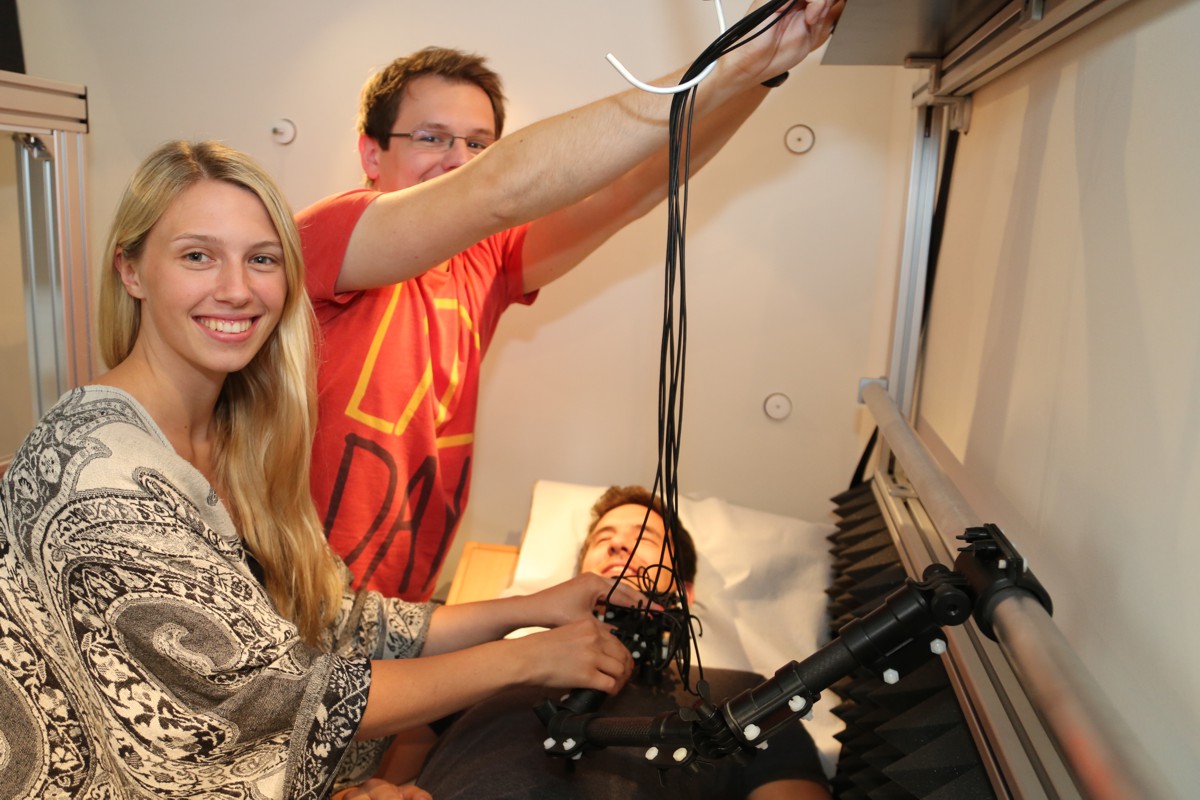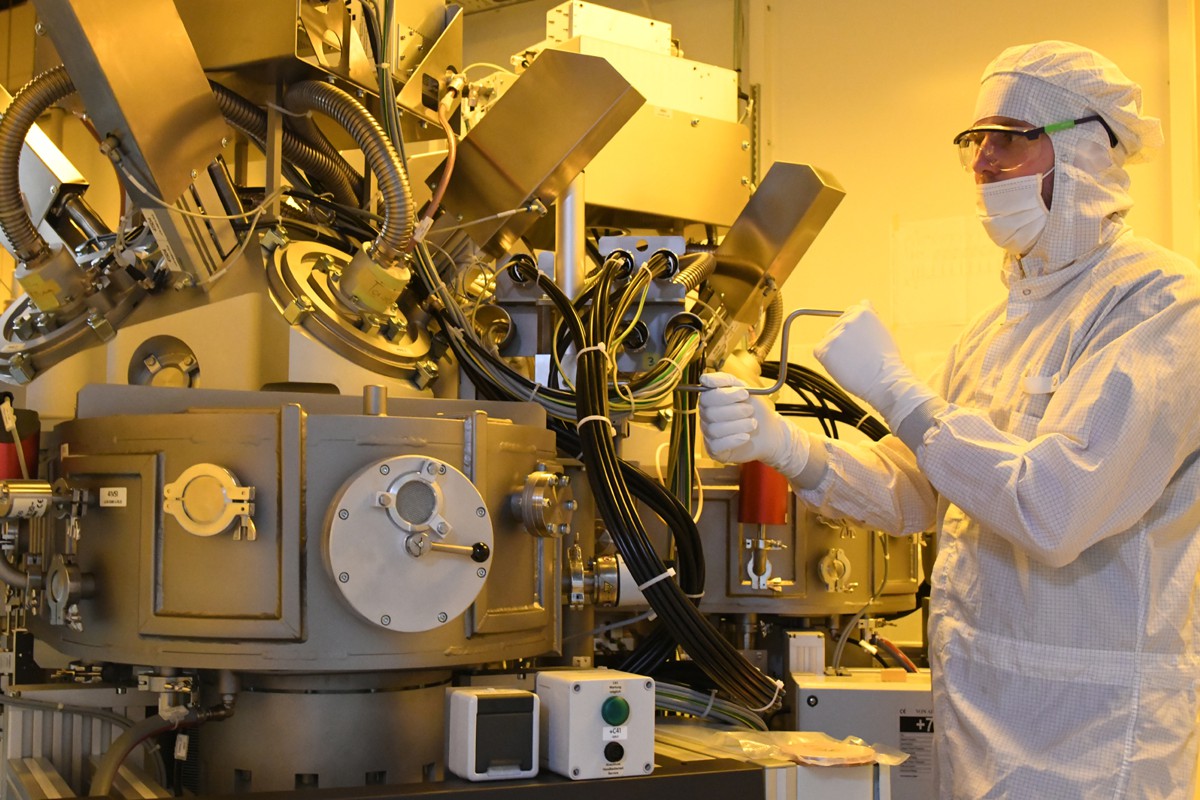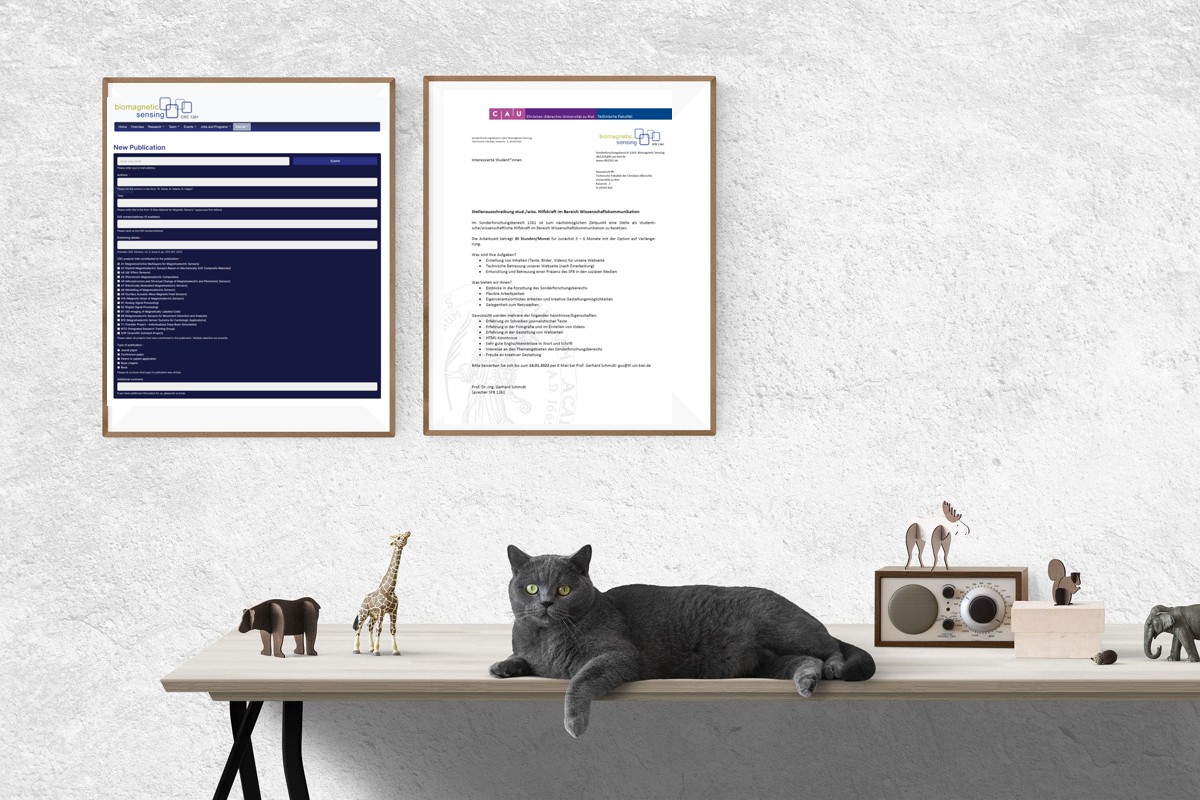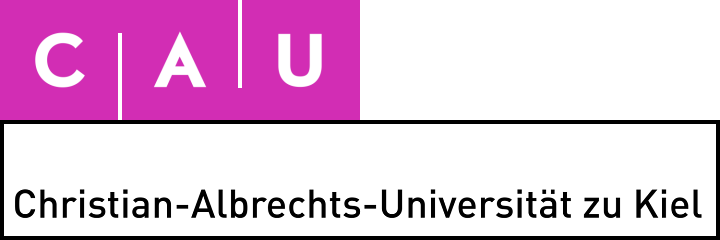Recent News
Effective Science Communication in the Age…
Magnetorelaxometry Imaging of Magnetic Nanoparticles with…
MEMS-Magnonic Integration for Tunable RF Devices
Meet & Greet: Engineering Careers Beyond…
CRC 1261 - Magnetoelectric Sensors: From Composite Materials to Biomagnetic Diagnostics
 The detection of magnetic field distributions in the head or torso makes powerful diagnostics of functions of the brain (magnetoencephalography MEG) or heart (magnetocardiography MCG) possible. Additionally, the detection of artificial weak magnetic fields, e.g., for deep brain stimulation, of magnetically labelled cells in scaffolds or for movement analysis offers attractive new biomagnetic applications. Systems used as routine diagnostic tools need to be easy-to-handle and cost-effective, thus, operation at room temperature is essential. In the first funding period, uncooled magnetoelectric (ME) magnetic field sensors have revealed their potential to detect weak magnetic fields at low frequencies, as required for those applications. These ME sensors are based on ME composites, i.e. composites consisting of at least one magnetostrictive and one piezoelectric constituent, which were fabricated using micro-electro-mechanical systems (MEMS) technology.
The detection of magnetic field distributions in the head or torso makes powerful diagnostics of functions of the brain (magnetoencephalography MEG) or heart (magnetocardiography MCG) possible. Additionally, the detection of artificial weak magnetic fields, e.g., for deep brain stimulation, of magnetically labelled cells in scaffolds or for movement analysis offers attractive new biomagnetic applications. Systems used as routine diagnostic tools need to be easy-to-handle and cost-effective, thus, operation at room temperature is essential. In the first funding period, uncooled magnetoelectric (ME) magnetic field sensors have revealed their potential to detect weak magnetic fields at low frequencies, as required for those applications. These ME sensors are based on ME composites, i.e. composites consisting of at least one magnetostrictive and one piezoelectric constituent, which were fabricated using micro-electro-mechanical systems (MEMS) technology.
The general objectives of the Collaborative Research Centre CRC 1261 are investigations of different ME sensor approaches with a special focus on high sensitivity at biomagnetic frequencies (project area A) and their evaluation and utilization in medically relevant questions (project area B). The research program to pursue these goals requires intensive interdisciplinary collaboration between materials scientists, electrical engineers and physicians (neurology and cardiology). Project area A, entitled "Sensor Technology", covers research from new materials (A1, A2) to the investigation of different ME sensor approaches [ΔE-effect (A4), piezotronic readout (A5, A6), electrically modulated sensors (A7) and surface acoustic wave sensors (A9)]. All projects that focus on improving the detection limit at biomagnetically relevant frequencies will be supported by modelling (A8, A10) and advanced characterization (A6, A10). These modelling projects are linked closely to the modelling activities in project area B. This area B, entitled "Magnetoelectric Sensor Systems for Medical Applications", includes signal processing (B1, B2) and selected application areas in cardiology, neurology and life sciences, which have different detection requirements in magnetic field strength, frequency and spatial resolution (B7, B9, B10 and T1). Further collaborations of the two project areas A and B and the two service projects are fostered by six focus groups which are dedicated to organizing the work on the overarching topics "Magnetic Layers" (Focus Group F1), "Modelling" (Focus Group F2), "Comparison of Sensor Concepts" (Focus Group F3), "ME Sensors" (Focus Group F4), "Concepts based on ΔE-effect" (Focus Group F5) and "Biomedical Applications" (Focus Group F6).
 Based on the deep brain stimulation (DBS) research in B5 in the first funding period, a transfer project T1 in cooperation with the company Boston Scientific now plans on building a user-friendly imaging system to display the magnetically measured and reconstructed electrical currents within the individual magnetic resonsonance imaging (MRI) of the patient. This system will serve as a helpful tool for better programming of DBS patients. The work within the CRC will be supported by two service projects on MEMS sensor fabrication (Z1) and on ME sensor characterization (Z2). An Integrated Research Training Group (IRTG) will foster the interdisciplinary collaboration within the CRC 1261 and provide the best possible research experience and training for our early career scientists. Furthermore, a Scientific Outreach Project (SOP) will be responsible not only for outreach to the public, school students and teachers but also for strengthening the interdisciplinary scientific communication within the CRC with a special focus on early career researchers.
Based on the deep brain stimulation (DBS) research in B5 in the first funding period, a transfer project T1 in cooperation with the company Boston Scientific now plans on building a user-friendly imaging system to display the magnetically measured and reconstructed electrical currents within the individual magnetic resonsonance imaging (MRI) of the patient. This system will serve as a helpful tool for better programming of DBS patients. The work within the CRC will be supported by two service projects on MEMS sensor fabrication (Z1) and on ME sensor characterization (Z2). An Integrated Research Training Group (IRTG) will foster the interdisciplinary collaboration within the CRC 1261 and provide the best possible research experience and training for our early career scientists. Furthermore, a Scientific Outreach Project (SOP) will be responsible not only for outreach to the public, school students and teachers but also for strengthening the interdisciplinary scientific communication within the CRC with a special focus on early career researchers.
The overall aim of the CRC 1261 is the establishment of a biomagnetic diagnostics system based on ME sensors for MEG, MCG, and other biomedical applications and to demonstrate its potential on selected medical diagnosis problems. The individual goals of the two remaining funding periods are grouped on the basis of the predicted limits of detection of the ME sensors at biomagnetically relevant frequencies ranging from 1 Hz to about 1 kHz. Based on the results of the first funding period with limits of detection in the range of 10 pT/Hz1/2 at relevant frequencies, the selected application projects (B7, B9, B10, T1) are all feasible with the current sensor technology within the CRC but will of course profit from the expected improvement of the sensor performance during the second funding period.
Acknowledgment
We thank the DFG for establishing and founding the Collaborative Research Center 1261 "Magnetoelectric Sensors: From Composite Materials to Biomagnetic Diagnostics".
Further Information
More information about the collaborative research center 1261 can be found in the following sections.
| Topic | Details | |
|---|---|---|

| Research | In this section the research objectives and results are presented. The entire collaborative research center is organized in different projects and the project cooperation is coordinated in six focus groups. Publications can be found either here as an overview or on the individual project pages. |

| Team | About 60 people are very proud to participate in the CRC 1261. They stem from various disciplines such as physics, material science, electrical engineering, and medicince. Details of our members can be found in one of the following section: steering board, principal investigators, CRC coordination, PhD students and postdocs, and alumni. |

| Data | Whenever we record data in the CRC we try to open the recorded data as much as possible to the scienctivic community. We follow the FAIR prinicple which stands for Findability, Accessibility, Interoperability, and Reuse of data sets. However, since we often measure data from humans we have to keep also the wishes and rights of the people into account that we have recorded. |

| Events | We have several events in our CRC. Twice a year we all come together and report our current findings and discuss future directions in retreats that usually last two days. Once a month we invite external speakers to give a talk about a CRC related topic. About four times per year our six focus groups meet and discuss cross-project topics. Details about those events plus some futher topics can be found in the following sections of this website. |

| Jobs and Programs | There are several possibilites to join the collaborative research center. If you are looking for a job in our CRC please have a look on this webpage. Here, open PhD and postdoc positions, but also administrative and student jobs (so-called "HiWi jobs") are offered. Furthermore, a detailed eduction program is offered for the CRC-internal PhD students. Postdocs can also join in this program (or in parts of it). Besides the PhD education program several support programs (mainly for supporting talented women) are offered. In addtion to the topics mentioned before, we regularly offer international fellowships of three to six months duration to master students or master graduates. Details can be found here. |

| Forms and Templates | In order to simplify our processes (and making them more "robust") we have several forms and templates for our CRC members. |




